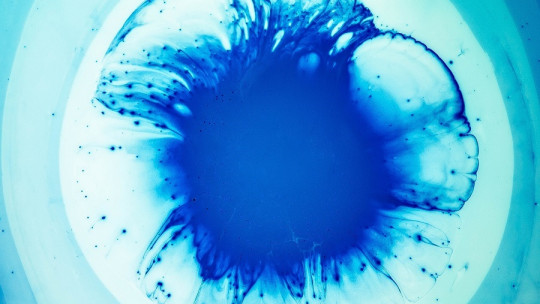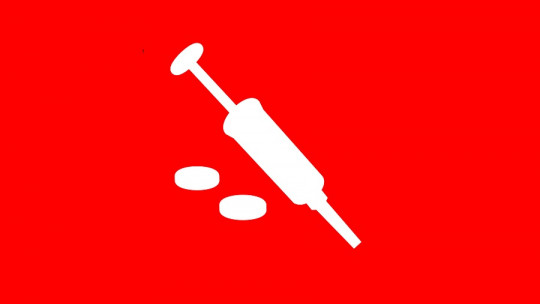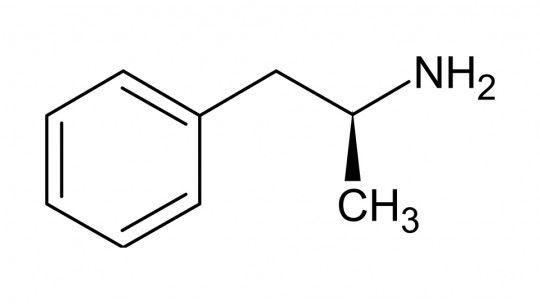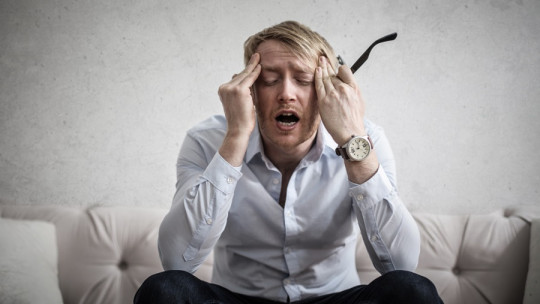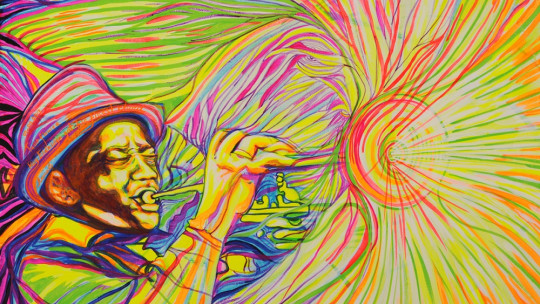
Mood and anxiety disorders They are two of the most common mental problems in the Western population today. Fortunately, there is a wide variety of methods that allow sufferers to reduce or even make their symptoms disappear. However, in many respects these solutions are not entirely satisfactory.
Often the use of psychotropic drugs is required, which allow the symptoms to be controlled while psychological therapy is carried out. However, in some cases the medications prescribed to combat these symptoms are not effective enough or take a long time to begin to take effect, so that even today the effects of new substances or possible applications of unused elements continue to be investigated. so far therapeutically.
This is what happened to a retired psychiatrist, suffering from bipolar disorder with a high proportion of depressive episodes, who, faced with the infectivity of conventional methods, decided to try to treat his depression by smoking DMT every day
What is DMT?
Dimethyltryptamine or DMT is a psychodysleptic type substance that generates alterations in perception in the form of hallucinations These hallucinations are generally brief in nature and often have mystical and existential content. It is considered one of the most powerful hallucinogens, and is usually consumed orally or smoked, having practically immediate effects.
This substance is part of the well-known ayahuasca, a concoction that some indigenous tribes in America use ritually to experience different “mystical” visions. It is an illegal drug and has the potential to cause psychotic episodes, confusion and anxiety. Currently, the consumption of DMT appears linked to MAOI-type antidepressants, which allow its effects to be enhanced and prolonged (since it is naturally metabolized quickly).
DMT can be found in various plants, although in small quantities it also appears in some regions of our brain. sometimes called mystical or god molecule, has popularly been linked to the experience of extracorporeal phenomena and sensations in near-death experiences. It has sometimes been speculated that it also occurs during sleep.
The possible antidepressant effects of this drug
Although it is not considered to produce feelings of euphoria like other psychodysleptics, there has been speculation about the possibility of using this substance or derivatives of it in the treatment of depression or addiction to other drugs and that is why different investigations have been carried out in this regard.
The results of some of them reflect that DMT has a serotonin-enhancing effect, imitating the behavior of this hormone in different brain receptors. One of them is 5-HT2C, whose activation can generate an improvement in mood. Likewise, the activation of other serotonin receptors could explain the presence of hallucinations.
In controlled studies it has been found that The administration of DMT can produce relaxation and a decrease in depressive symptoms in low doses, although this effect must be replicated and the possible complications derived from it must be analyzed (the trials had very few participants).
The case of the former psychiatrist who took DMT
Suffering from a bipolar disorder in which the existence of depressive episodes predominated and in which conventional medication is not effective, and based on the results of previous studies carried out on ayahuasca and DMT, a former psychiatrist retired from forty years old decided to try treat your depressive symptoms through daily consumption of this substance
Starting treatment
The subject in question acquired the substance illegally, through the deep weband began a treatment in which DMT was administered daily.
The doses were extremely high, about a gram daily Despite this, due to a slight improvement in his mood, the subject decided to add to his treatment the administration of phenelzine, an MAOI or monoamine oxidase enzyme inhibitor used in the treatment of atypical depression even though it requires control. exhaustive consideration of aspects such as diet as it can very easily cause liver failure and sudden and dangerous elevations in blood pressure.
This second substance greatly enhances the effects of DMT. During this period, the family would later report that the experimenter began to exhibit hypomanic and erratic behaviors, as well as to show a significant increase in their level of religiosity He also had decreased sleep, which the former psychiatrist treated with clonazepam.
Abstinence syndrome
However, six months after starting self-medication, the individual had to take a plane out of state and was forced to stop using for a few days. This sudden cessation of supply of the substance caused a severe withdrawal syndrome in him which would cause him to be taken to the hospital.
The subject suffered a severe psychotic episode and also manifesting manic symptoms, aggressive behavior (having to be reduced and contained) and difficulties communicating. He then collapsed, suffering seizures and even needing to be intubated for a day while he was stabilized. Once stabilized, he began to show logorrheic behavior, presenting powerful religious hallucinations in which course he even demanded that an exorcism be performed on him.
After the administration of a treatment that lasted for a week, the symptoms seemed to subside. Finally, an outpatient follow-up of the patient’s condition was proposed, whose current condition has not been revealed.
Implications of the case
The case of this former psychiatrist has important repercussions that should be considered. DMT is a substance that must be studied carefully and that currently does not have an approved therapeutic use requiring further exploration of its effects and risks.
It has been reported that it can also generate manic and psychotic episodes due to its hallucinatory effects in cases in which people suffer from previous psychopathologies or consume other substances. In the case that gives rise to this article, furthermore, the dose used (1 gram daily) was exaggeratedly high, which increases the risks.
Furthermore, previous research carried out worked under controlled conditions in which volunteers manifested severe and chronic depression, but not bipolar disorder. In bipolar disorder there have been at least episodes of hypomania, and in the case of a former psychiatrist, the clinical history reflects the existence of a previous manic episode. By this we mean that the use of DMT could cause an increase in manic symptoms (as in fact would occur in this case).
Likewise, as with other substances, it must be taken into account that the acquisition of dependence and tolerance to a substance means that In the event of sudden withdrawal, withdrawal syndromes of varying severity may arise which could even end in the death of the subject. Whenever the withdrawal of a substance occurs, it must be gradual and controlled.
Finally, another of the issues that we can see in this case is that of the self-medication carried out by this former psychiatry professional. Although in the case of this subject it was someone who had training linked to the world of psychotropic drugs, the self-prescription and self-administration of drugs can have severe consequences for those who carry it out, especially if it is done without knowledge of the subject. or possible adverse effects, interactions or indicated doses.

